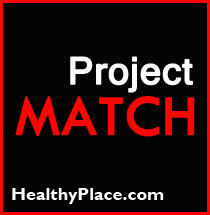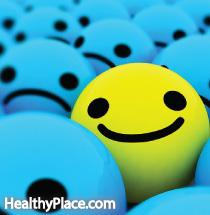Narcissists are an elusive breed, hard to spot, harder to pinpoint, impossible to capture. Even an experienced mental health diagnostician with unmitigated access to the record and to the person examined would find it fiendishly difficult to determine with any degree of certainty whether someone suffers from an impairment, i.e., a mental health disorder - or merely possesses narcissistic traits, a narcissistic personality structure ("character"), or a narcissistic "overlay" superimposed on another mental health problem.
Moreover, it is important to distinguish between the traits and behaviour patterns that are independent of the patient's cultural-social context (i.e., inherent, or idiosyncratic) - and reactive patterns, or conformity to cultural and social mores and edicts. Reactions to severe life crises are often characterized by transient pathological narcissism, for instance (Ronningstam and Gunderson, 1996). But such reactions do not a narcissist make.
When a person lives in a society and culture that has often been described as narcissistic by the leading lights of scholarly research (e.g., Theodore Millon) and social thinking (e.g., Christopher Lasch) - how much of his behaviour can be attributed to his milieu - and which of his traits are really his?
Moreover, there is a qualitative difference between having narcissistic traits, a narcissistic personality, or the Narcissistic Personality Disorder. The latter is rigorously defined in the DSM IV-TR and includes strict criteria and differential diagnoses.
Narcissism is regarded by many scholars to be an adaptative strategy ("healthy narcissism"). It is considered pathological in the clinical sense only when it becomes a rigid personality structure replete with a series of primitive defence mechanisms (such as splitting, projection, projective identification, intellectualization) - and when it leads to dysfunctions in one or more areas of life.
Pathological narcissism is the art of deception. The narcissist projects a False Self and manages all his social interactions through this concocted fictional construct. People often find themselves involved with a narcissist (emotionally, in business, or otherwise) before they have a chance to discover his true nature.
When the narcissist reveals his true colors, it is usually far too late. His victims are unable to separate from him. They are frustrated by this acquired helplessness and angry that they failed to see through the narcissist earlier on.
But the narcissist does emit subtle, almost subliminal, signals ("presenting symptoms") even in a first or casual encounter.
Based on "How to Recognize a Narcissist":
"Haughty" body language - The narcissist adopts a physical posture which implies and exudes an air of superiority, seniority, hidden powers, mysteriousness, amused indifference, etc. Though the narcissist usually maintains sustained and piercing eye contact, he often refrains from physical proximity (he is "territorial").
The narcissist takes part in social interactions - even mere banter - condescendingly, from a position of supremacy and faux "magnanimity and largesse". But he rarely mingles socially and prefers to remain the "observer", or the "lone wolf".
Entitlement markers - The narcissist immediately asks for "special treatment" of some kind. Not to wait his turn, to have a longer or a shorter therapeutic session, to talk directly to authority figures (and not to their assistants or secretaries), to be granted special payment terms, to enjoy custom tailored arrangements.
The narcissist is the one who - vocally and demonstratively - demands the undivided attention of the head waiter in a restaurant, or monopolizes the hostess, or latches on to celebrities in a party. The narcissist reacts with rage and indignantly when denied his wishes and if treated equally with others whom he deems inferior.
Idealisation or devaluation - The narcissist instantly idealises or devalues his interlocutor. This depends on how the narcissist appraises the potential one has as a Narcissistic Supply Source. The narcissist flatters, adores, admires and applauds the "target" in an embarrassingly exaggerated and profuse manner - or sulks, abuses, and humiliates her.
Narcissists are polite only in the presence of a potential Supply Source. But they are unable to sustain even perfunctory civility and fast deteriorate to barbs and thinly-veiled hostility, to verbal or other violent displays of abuse, rage attacks, or cold detachment.
The "membership" posture - The narcissist always tries to "belong". Yet, at the very same time, he maintains his stance as an outsider. The narcissist seeks to be admired for his ability to integrate and ingratiate himself without investing the efforts commensurate with such an undertaking.
For instance: if the narcissist talks to a psychologist, the narcissist first states emphatically that he never studied psychology. He then proceeds to make seemingly effortless use of obscure professional terms, thus demonstrating that he mastered the discipline all the same - which proves that he is exceptionally intelligent or introspective.
In general, the narcissist always prefers show-off to substance. One of the most effective methods of exposing a narcissist is by trying to delve deeper. The narcissist is shallow, a pond pretending to be an ocean. He likes to think of himself as a Renaissance man, a Jack of all trades. A narcissist never admits to ignorance in any field - yet, typically, he is ignorant of them all. It is surprisingly easy to penetrate the gloss and the veneer of the narcissist's self-proclaimed omniscience.
Bragging and false autobiography - The narcissist brags incessantly. His speech is peppered with "I", "my", "myself", and "mine". He describes himself as intelligent, or rich, or modest, or intuitive, or creative - but always excessively, implausibly, and extraordinarily so.
The narcissist's biography sounds unusually rich and complex. His achievements - incommensurate with his age, education, or renown. Yet, his actual condition is evidently and demonstrably incompatible with his claims. Very often, the narcissist lies or fantasies are easily discernible. He always name-drops and appropriates other people's experiences and accomplishments.
Emotion-free language - The narcissist likes to talk about himself and only about himself. He is not interested in others or what they have to say, unless it is a potential Source of Supply and in order to obtain said supply. He acts bored, disdainful, even angry, if he feels an intrusion on and abuse of his precious time.
In general, the narcissist is very impatient, easily bored, with strong attention deficits - unless and until he is the topic of discussion. One can dissect all aspects of the intimate life of a narcissist, providing the discourse is not "emotionally tinted". If asked to relate directly to his emotions, the narcissist intellectualises, rationalises, speaks about himself in the third person and in a detached "scientific" tone or composes a narrative with a fictitious character in it, suspiciously autobiographical.
Seriousness and sense of intrusion and coercion - The narcissist is dead serious about himself. He may possess a fabulous sense of humour, scathing and cynical, but rarely is he self-deprecating. The narcissist regards himself as being on a constant mission, whose importance is cosmic and whose consequences are global. If a scientist - he is always in the throes of revolutionising science. If a journalist - he is in the middle of the greatest story ever.
This self-misperception is not amenable to light-headedness or self-effacement. The narcissist is easily hurt and insulted (narcissistic injury). Even the most innocuous remarks or acts are interpreted by him as belittling, intruding, or coercive. His time is more valuable than others' - therefore, it cannot be wasted on unimportant matters such as social intercourse.
Any suggested help, advice, or concerned inquiry are immediately cast by the narcissist as intentional humiliation, implying that the narcissist is in need of help and counsel and, thus, imperfect. Any attempt to set an agenda is, to the narcissist, an intimidating act of enslavement. In this sense, the narcissist is both schizoid and paranoid and often entertains ideas of reference.
These - the lack of empathy, the aloofness, the disdain, the sense of entitlement, the restricted application of humour, the unequal treatment and the paranoia - make the narcissist a social misfit. The narcissist is able to provoke in his milieu, in his casual acquaintances, even in his psychotherapist, the strongest, most avid and furious hatred and revulsion. To his shock, indignation and consternation, he invariably induces in others unbridled aggression.
He is perceived to be asocial at best and, often, antisocial. This, perhaps, is the strongest presenting symptom. One feels ill at ease in the presence of a narcissist for no apparent reason. No matter how charming, intelligent, thought provoking, outgoing, easy going and social the narcissist is - he fails to secure the sympathy of his fellow humans, a sympathy he is never ready, willing, or able to grant them in the first place.
next: The Adrenaline Junkie


